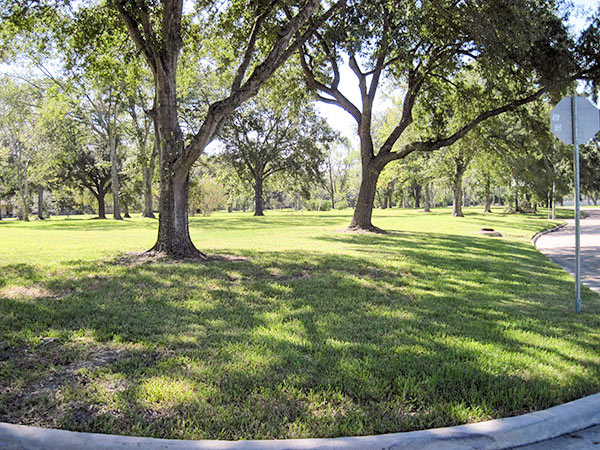LIFE IN ARBOR OAKS, AFTER MOST OF THE NEIGHBORS HAVE MOVED AWAY  “It’s almost like living in the country,“HOA president and longtime Arbor Oaks resident Gwen Boucher tells Mike Morris. Her home has flooded 9 times in 42 years. A total of 207 properties in her neighborhood, near the intersection of Antoine and W. Little York, have been bought out and torn down since Tropical Storm Allison 16 years ago, at a cost of $36 million. Arbor Oaks is now down to just 13 homes, all of which flooded after Hurricane Harvey. “Though much of the neighborhood has returned to nature, it can feel unnatural. Yellow street signs and speed bumps caution cars that never come. Deep-green hostas still circle clumps of oak trees on vacant Gum Grove, exactly as their long-gone gardeners intended,” Morris writes. “Though some holdouts live within their original fences, others take a less literal approach. Two families have turned adjacent lots into volleyball courts. A handful of the houses sport basketball hoops, which is common enough, except that they are planted, in cement, on vacant lots across the street. Eugene Cox parks spare vehicles on the nearby grass, and is keeping two antique chassis on the street for a friend. Another neighbor, a truck driver, parks his cab on the street.” [Houston Chronicle ($)] Photo of park carved from former Arbor Oaks homesites: Near Northwest Management District
“It’s almost like living in the country,“HOA president and longtime Arbor Oaks resident Gwen Boucher tells Mike Morris. Her home has flooded 9 times in 42 years. A total of 207 properties in her neighborhood, near the intersection of Antoine and W. Little York, have been bought out and torn down since Tropical Storm Allison 16 years ago, at a cost of $36 million. Arbor Oaks is now down to just 13 homes, all of which flooded after Hurricane Harvey. “Though much of the neighborhood has returned to nature, it can feel unnatural. Yellow street signs and speed bumps caution cars that never come. Deep-green hostas still circle clumps of oak trees on vacant Gum Grove, exactly as their long-gone gardeners intended,” Morris writes. “Though some holdouts live within their original fences, others take a less literal approach. Two families have turned adjacent lots into volleyball courts. A handful of the houses sport basketball hoops, which is common enough, except that they are planted, in cement, on vacant lots across the street. Eugene Cox parks spare vehicles on the nearby grass, and is keeping two antique chassis on the street for a friend. Another neighbor, a truck driver, parks his cab on the street.” [Houston Chronicle ($)] Photo of park carved from former Arbor Oaks homesites: Near Northwest Management District





This is making me wonder if the neighborhood could be made into a flood pool?
My grandparents lived there in the 70s. As a kid from a small town in East Texas this neighborhood seemed like Beverly Hills to me. They moved away in the 80s. Years later when I moved to Houston I wanted to drive by their house for old time’s sake. I had to go to the library downtown to find the address since everyone in my family had forgotten it. I was stunned at the changes from the 80s to the 2010s. The area looked like a bomb went off. Not just Arbor Oaks, the whole area took a terrible turn. I never got to see their old house, it was torn down years ago.
If the holdouts sell or die out, then the neighborhood would become a great candidate for a flood damage reduction project (i.e. regional detention).
The “holdouts” won’t ever sell. They didn’t accept a FEMA buyout years ago, and no individuals or investors will offer them anything for their property now – not even comparable to what the FEMA offers were. The properties are not insurable, so no buyer can get a mortgage. Adjacent neighborhoods have declined. If some government entity wanted to make it a flood retention area (good idea!), they aren’t going to offer anything better than what FEMA offered. What follows would be: eminent domain proceedings, messy court hearings, and owners losing. I suspect if it is a candidate for a retention area, they are just waiting. That’s sad for the property owners downstream.